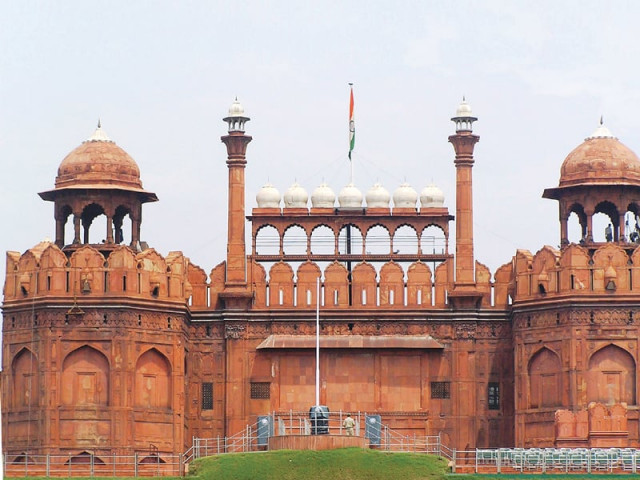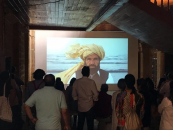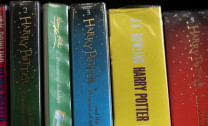Delhi by Heart: Writing ‘home’
A brush with history only sheds the absurdities of the present.

The Red Fort in Delhi. PHOTO COURTESY: RAZA RUMI
The Express Tribune: Don’t you think it’s a daunting task to write about a city that you really don’t know about and which has been the subject of some celebrated books by prominent authors?
Raza Rumi: Indeed, it was a tough call. I was extremely unsure about my abilities as a writer when I started to work on the book. However, the encouragement I received from the publisher, as well as friends who read the book, made me a bit comfortable about the process of writing, and I continued to research and write. This is why the book is not a linear account of either travel stories or the history of the city per se. In fact, it is a more of a journey of exploring the past, celebrating the diversity of our shared culture.
ET: Were you concerned about the fact that writing about the Indian capital might be viewed unfavorably in Pakistan?
Rumi: My book is not about India-Pakistan relations, Kashmir or other disputes the two countries have wasted their energies on, nor is it about the invincibility of one nationalist narrative [over] the other. In fact, a brush with history only sheds the absurdities of the present.
How can we write off nearly a thousand years of co-existence with non-Muslims in the Indian subcontinent? What about Amir Khusrau, Ghalib, and other cultural references that are still shared and refuse to follow initial state mantra? In my book, I have been critical of the way the Indian nation state has also distorted the narrative and how we need to move beyond that.
ET: There is a lot of emphasis on sufism in your book. Any particular reason for that?
Rumi: To understand the spread of Islam, and the construction of Hindu Muslim identity, an exploration of the sufi thought and how it discovered a fertile indigenous culture in South Asia is most important. Contrary to the common misconceptions, Islam did not spread in India due to kingship and the policies of Sultans or Mughals. Instead, the plural and tolerant methods of sufi engagement were most helpful in propagating the simplicity and equality inherent to Islamic thought.

Delhi, also known as the ‘courtyard of the sufis’, was a special area of my interest. In every corner of the city, there is a visible or hidden shrine. Some of them I explored with my sufi soul mate Sadia Dehlvi, while others I discovered through older books and texts. There is still so much to know and discover and it would take time for me to fully know about the treasures that lie hidden under the seemingly busy chaotic and powerful capital of India.
ET: Your book seems to have a central theme which some may not agree with, even in India. Are you concerned about receiving criticism, as you make some bold assertions throughout the text?
Rumi: I’m sure that there will be aspects of my book that may ruffle a few orthodox feathers. However, I’m also certain that most people will not ignore the honesty with which I have presented my views in the narrative. Yes, I am a bit of a brainwashed Pakistani visiting a known-unknown territory. The central argument in the book deals with how ancient and medieval Delhi led to the evolution of the north Indian cuisine, music, Urdu language, mannerisms, and other everyday references that Indians and Pakistanis are so familiar with. But there is another dimension to this narrative. There is a constant evolution of the city, and its symbols, underneath all the destruction and frequent plunder that the city faced in millennia, and [therein] lies its resilience and ability to resurrect itself. Few cities can boast of such dynamism, for Delhi has always risen from ashes, and its layers of history make it an eminently exciting and wondrous arena.
ET: What about the modern city? You are not too impressed with post-1947 Delhi?
Rumi: Really? Did I give that impression? Of course post-partition Delhi has a different history and its architecture, values and trajectory have pulled it into the rise of democratic India, struggling with an imperial past and a colonial state. The most fascinating part, not unlike [in] other cities [of] South Asia, is the emergence of different cities within one metropolis. I have mentioned these stories in my book, yet I am cognizant of the [problematic] that an ‘outsider’ will never be able to write it all.
An excerpt from the book:
The Red Fort stands in the heart of Shahjahanabad, like a relic that someone forgot to worship. Imposing in its presence, it emerges into one’s vision from nowhere...
....Entering the Fort through scanners reminded me once again of the word ‘terror’ juxtaposed with the word ‘Muslim’. The Indian media keeps whipping up these words periodically. But is it not a dangerous alienating game? I shrug off such questions and move forward with the little group amid the sound of clicking cameras.
The walkways to the main buildings in the Fort complex were clean and quiet as the stream of tourists had not started flowing in. The Diwan-e-aam (public gallery) is our first major halt. This was the site of royals’ durbars including the ones organized by the British. The lonely throne made of marble with intricate inlay work can be spotted behind the protective screens placed around it. I imagine what the Delhi Durbar must have been in all its glory. After wandering through the Diwan-e-Khas which were the royal chambers, bedrooms and inter-connected courtyards, we reach the little gate that provided the escape route for Bahadur Shah Zafar, who perhaps had no idea that this exit would be his final one and that the world inside the Fort was going to crumble and disappear with the brutal end to the 1857 Mutiny by the British. The little wooden gate is locked.
On the night of the fall of Delhi in early 1858, General Wilson, the Commander of the British forces, celebrated his victory with a festive dinner in the Diwan-e-Khas, the innermost sanctum of the three-centuries-old Mughal reign in India. The dinner would be an eclectic mix of Victorian cold cuts, canned fish and meats, and general army mess cuisine. In the days to follow, twenty-one Mughal princes were condemned, hanged and eliminated in a flash. Many more were shot dead and their corpses were displayed in Chandni Chowk to inform the public as to what would happen to rebellious subjects as well as to remind citizens about the brutal capabilities of the new imperial order. The British contemplated demolishing the Jama Masjid and the Red Fort. However, the exquisite Fathepuri mosque was sold to Lala Chunna Mal, a Hindu merchant, as his private property and the Zinatul Masjid was converted into a bakery. Buildings within a radius of 500 yards of the Red Fort were razed to ground. Structures around the Jama Masjid were also cleared in the name of martial orderliness. Quite symbolically, the buildings blocking the new wider roads and the planned railway line were also demolished.
The kuchas, galis and katras erased in the process represented a larger metaphor—the erasure of not just bricks, mortar and marble, but a centuries’-old way of life. An entire tehzib was dismantled and replaced. For Delhi this was nothing new though; each episode of human suffering is real and unique. Delhi’s melancholy was to stay, but counterpoised by the inner zest of its residents who had seen much worse and reinvented themselves like their beloved city.
The negligence of the Fort as it stands today is quite monumental; in particular, the later-day additions of iron grills and fences which are completely out of sync with the place. The government departments in Pakistan and India are incapable of appreciating fine aesthetics and the buck, as usual, stops at ‘lack of resources’. Many walls of the Fort have been tastelessly white-washed for purposes of ‘conservation,’ and the shoddy patchwork amid small Mughal bricks or sandstone conspicuously mars the impact of the old structures. In many ways, the Delhi Fort is modelled after the Lahore Fort—the public and private quarters, gardens, Sheesh Mahal and the underground chambers. The differences can be attributed to the innovations of Shah Jahan and his highly refined female companions, the Queen and Princess Jahanara, as well as its proximity to Chandni Chowk and the city of Shahjahanabad…

As we reach the sandstone chabutras designed for musical soirées and for poetry sessions or mushairas, the cloistered spaces open up. How magical it must have been! I attempt to explain the concept of mushairas to the Americans but feel inhibited by the impossibility of translating the inner language of culture. Mushairas were the high points of Delhi’s literary culture. Young as well as more seasoned poets recited their verses with elegant etiquette in the late evenings; these sessions continuing well into the dawn. Kings and nobles, patrons of the Delhi poets, would be the chief guests, adding decorum to these events. Despite many internal and external attacks, by the early nineteenth century, the Fort grew into a hub for poetry and its experimentation, especially in Urdu. The finest Persian carpets would be unrolled for the poets. A roving candle would light up the poetry in front of the bards. Ghazals, a genre of poetry, expressing love for the temporal and divine with doses of existential rambling, was popular.
The ghazal is uniquely structured in that each couplet is a universe of meaning and there is no compulsion, despite the formalism, to build on a single theme. Even the mood varies with each couplet and so does the theme. Disparate yet whole, the couplets of a ghazal are connected.

As the comforting sunlight added little patterns on the red sandstone, I mused about how the eminent poets of Delhi— Ghalib, Momin, Azurda, Sahbai—would all gather during a typical mushaira presided over by Bahadur Shah Zafar. The poets would play games with Ustad Zauq, the king’s favourite poet, by paying compliments to his rivals and by over-rating lesser poets.
Such was the cultural climate of Shahjahanabad that a Frenchman, Alexander Heatherley, adopted the nom de plume of ‘Azad’ and became a pupil of Delhi’s Urdu poets, finding a place at royal gatherings…
Delhi by Heart: Impressions of a Pakistani Traveller (Harpers Collins, India — May 2013 Rs855 on discount at Liberty Books
Published in The Express Tribune, Sunday Magazine, July 7th, 2013.
Like Express Tribune Magazine on Facebook, follow @ETribuneMag on Twitter to stay informed and join the conversation.



















COMMENTS
Comments are moderated and generally will be posted if they are on-topic and not abusive.
For more information, please see our Comments FAQ